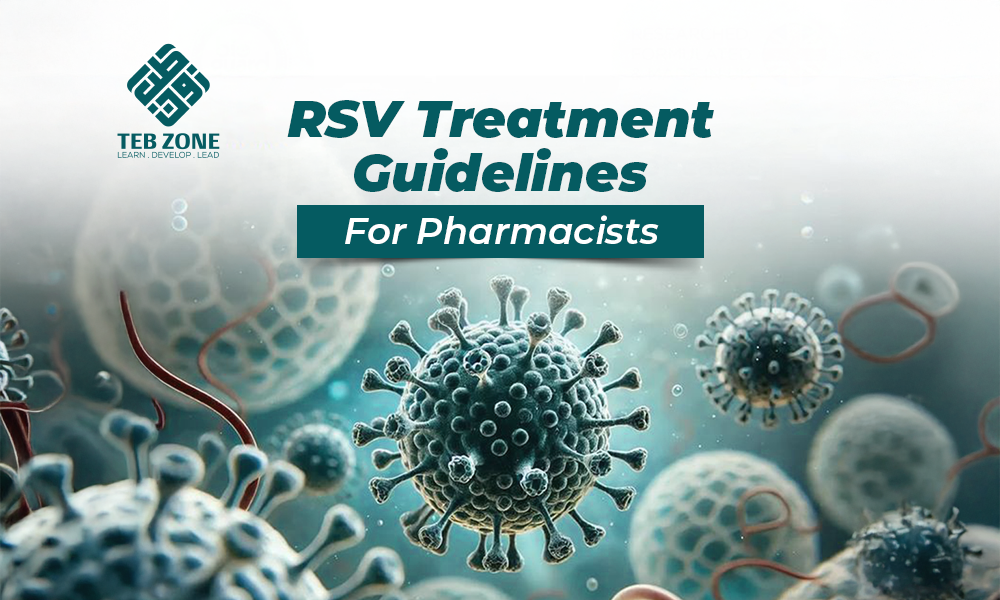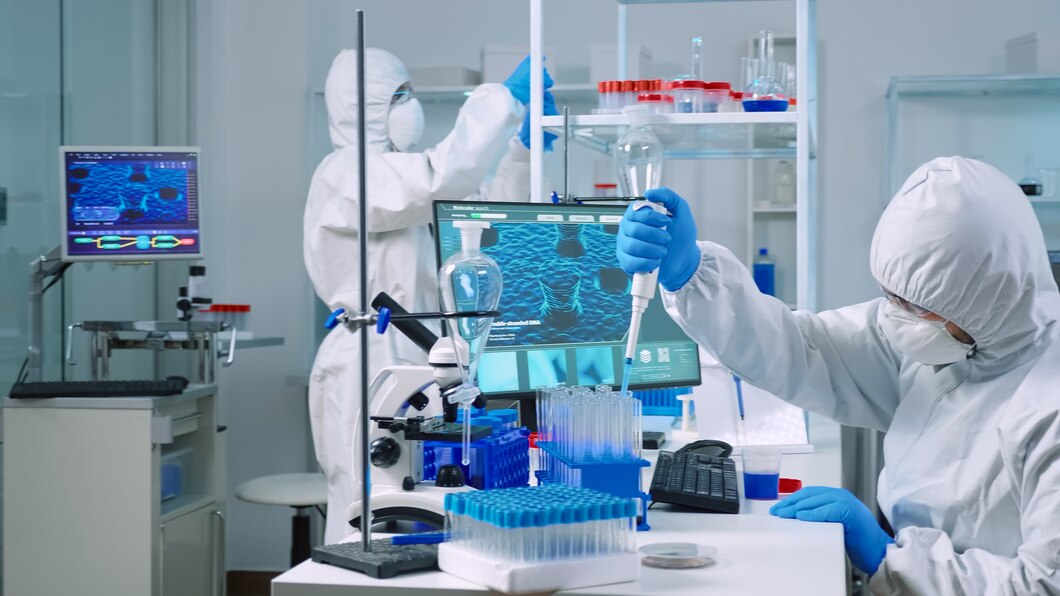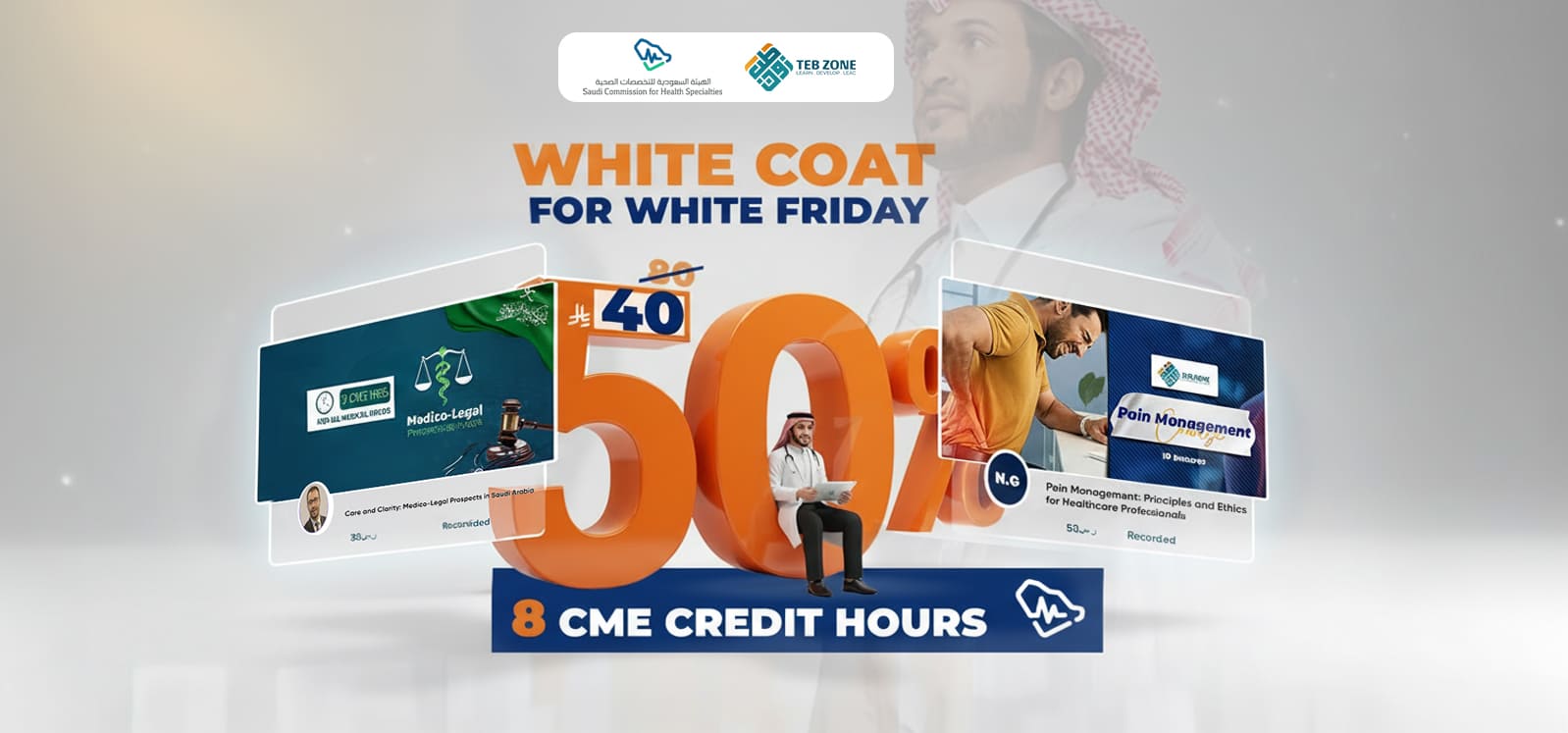

RSV Treatment Guidelines for Pharmacists
This article from TebZone the CME Platform, provides a practical, pharmacist-focused overview of RSV management, supported by personal stories from frontline nurses and insights from leading health organizations like the CDC, WHO, and FDA.
RSV Treatment Guidelines for Pharmacists: Prevention, Management, and the Frontline Role
As Respiratory Syncytial Virus (RSV) spreads more quickly and strongly than it has in the past, community and hospital pharmacists are stepping up to protect, support, and educate the most at-risk groups.
This article from TebZone the CME Platform, provides a practical, pharmacist-focused overview of RSV management, supported by personal stories from frontline nurses and insights from leading health organizations like the CDC, WHO, and FDA.
RSV: What Pharmacists Need to Know!
RSV is a highly contagious, negative-sense, single-stranded RNA virus that affects the respiratory tract.
It spreads through respiratory droplets and contaminated surfaces, surviving for hours on hard surfaces like crib rails and doorknobs.
It is an Orthopneumovirus of the family Paramyxoviridae with two major subtypes (A and B).
Although RSV typically causes mild symptoms in healthy individuals, it can lead to bronchiolitis and pneumonia in infants, young children, and older adults.
The virus spreads through respiratory droplets and contaminated surfaces, surviving up to 6 hours on nonporous surfaces.
According to the CDC (Centers for Disease Control and Prevention):
~2.1 million outpatient visits for children <5 annually.
58,000–80,000 hospitalizations in this age group.
60,000–120,000 hospitalizations among adults 65+.
100–300 deaths in young children, 6,000–10,000 in older adults.
RSV Risk Factors and the Pharmacist's Role in Prevention
Infants under 6 months: Increased risk due to developing immune systems and smaller airways.
Premature infants (less than 32 weeks’ gestation): Higher risk of severe infection.
Older adults (65+): Especially those with chronic heart disease (CHD), chronic obstructive pulmonary disease (COPD), or weakened immune systems.
Immunocompromised individuals: At greater risk due to their compromised immune defenses.
People with chronic conditions like asthma or COPD: More likely to experience severe outcomes.
Environmental factors: Crowded living conditions and tobacco smoke exposure increase transmission risk.
Long-term care facilities (LTCFs): Higher risk for older adults with chronic conditions, due to close quarters and frequent interactions.
Pharmacists must recognize these risk factors to identify at-risk patients and provide guidance on preventive measures.
Clinical Presentation: Age Matters
Typical symptoms (appearing 4–6 days after exposure):
Runny nose
Sneezing
Coughing
Wheezing
Fever
Decreased appetite
Apnea (in very young infants)
Pharmacists should refer at-risk patients showing respiratory distress, dehydration, or sustained fever.
RSV Treatment Options for Severe Cases: Bronchodilators and Ribavirin
While most RSV infections are self-limiting, some patients, particularly those with severe lower respiratory tract infection (LRTI), may benefit from additional treatment options.
Bronchodilator Therapy:
Alpha agonists (e.g., vaporized epinephrine) have been used in managing acute bronchiolitis episodes associated with RSV.
Some patients may experience improvements in respiratory rate, pulse, and oxygenation with bronchodilator therapy.
Although bronchodilators may help in certain cases, the evidence on their overall efficacy remains inconclusive, and their use should be closely monitored.
Ribavirin:
Ribavirin is a broad-spectrum antiviral agent used for treating severe RSV disease in children, approved by the US FDA in 1985.
The recommended dose for aerosolized ribavirin is 6 g of the drug mixed with 300 mL of distilled water, delivered via a small-particle aerosol generator (SPAG) for 12–20 hours per day over a course of 3–7 days depending on clinical response.
Alternatively, a higher concentration (6 g/100 mL) can be administered over 3 discrete 2-hour periods per day.
Despite its use in severe cases, ribavirin has limited clinical benefits in reducing hospitalization or mortality. Additionally, its high acquisition cost and lack of strong evidence supporting its efficacy have restricted its widespread use.
Ribavirin is primarily reserved for high-risk patients, such as transplant recipients, who are more likely to experience severe RSV infections.
Pharmacists must be familiar with these therapies and the associated cost-benefit analysis when determining treatment options for severe RSV cases, particularly in immunocompromised or high-risk patients.
Find out which of our credit hour courses is right for you
Preventive Options: The Pharmacist’s Expanding Toolkit
With RSV seasons starting earlier and hitting harder, prevention is more important than ever. Pharmacists are key players in raising awareness and administering prevention tools.
A. Synagis® (Palivizumab)
A monoclonal antibody used in high-risk infants
Given IM at 15 mg/kg monthly during RSV season (typically up to 5 doses)
Indicated for:
Premature infants (<35 weeks)
Children with BPD or congenital heart disease
Not a vaccine, but often misunderstood as one
? Pharmacist Insight: Synagis is costly (~$3,900 per 100mg vial), so hospitals limit its use to eligible patients during peak RSV season.
B. Nirsevimab (Beyfortus®)
Approved in 2023
Longer-lasting protection with a single IM dose
Preferred over Synagis due to cost-effectiveness and ease of administration
C. RSV Vaccines
For Adults 60+:
Arexvy (GSK) and Abrysvo (Pfizer) – both preF protein-based vaccines
ACIP recommends shared clinical decision-making for vaccine eligibility
For Pregnant Women (32–36 weeks):
Abrysvo provides passive immunity to infants via placenta
Efficacy: ~82% against severe RSV in first 3 months of life
Pharmacist’s Role: Clinical + Counseling Impact
Pharmacists can take several proactive steps during RSV season:
In the Community:
Identify and counsel at-risk patients (infants, elderly, immunocompromised)
Recommend OTC medications and hydration strategies
Educate caregivers about warning signs: respiratory distress, poor feeding, cyanosis
In the Hospital:
Ensure accurate weight-based dosing for pediatric patients
Coordinate Synagis or nirsevimab administration
Collaborate on discharge planning and follow-up prophylaxis
Diagnostic Support
Though pharmacists don’t diagnose, understanding available diagnostic tools helps in supporting clinical teams:
rRT-PCR: Gold standard, especially for adults and immunocompromised patients
Antigen tests: Fast, 80–90% sensitivity in children, less reliable in adults
Infection Control: Key Prevention Tips for Families
Pharmacists should advise caregivers and patients on basic prevention:
Wash hands frequently
Avoid sharing cups, pacifiers, utensils
Clean high-touch surfaces regularly
Avoid smoke exposure and crowded environments during RSV season
Final Takeaway
RSV is no longer confined to textbooks or winter wards, it’s a real-time challenge for frontline pharmacists. With earlier outbreaks, strained pediatric wards, and evolving prevention tools, pharmacists must lead in education, early intervention, and medication safety.
By understanding risk factors, staying current with RSV treatment guidelines for pharmacists, and guiding families through symptom management, pharmacists can help reduce RSV-related complications and hospitalizations—just like Mary, the nurse who kept her family’s little ones out of the hospital this season.
Read more:
How to Read a medical Research Paper
Mounjaro FDA Approval For Weight Loss
Comprehensive Guide to the Saudi Medical License Exam (SMLE)
Comments











.jpg)




Reply to Comment